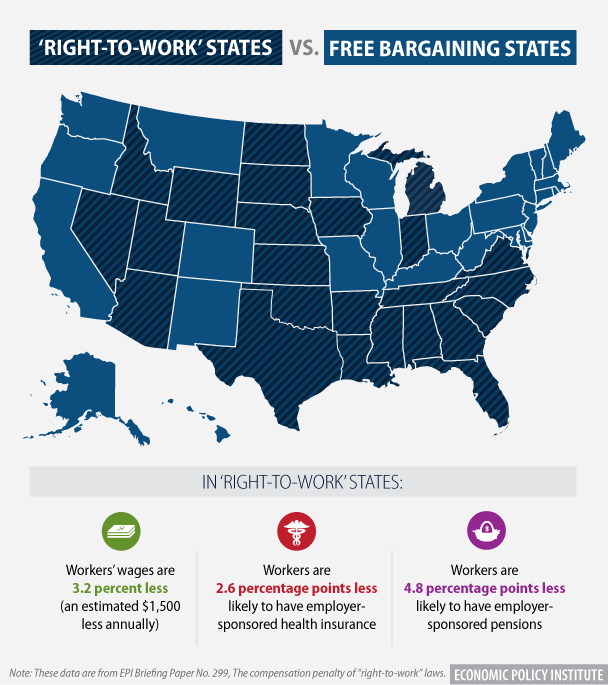On Tuesday, Michigan enacted a “right-to-work” law, becoming the 24th state to do so. While policymakers in Michigan claim that “right to work” helps workers, our research shows the exact opposite is true. Workers—both union and nonunion— in these states have lower wages on average, are less likely to have employer-sponsored health insurance, and are also less likely to have employer-sponsored pensions.
MORE: Featured EPI research on “right to work”

Note: These data are from EPI Briefing Paper No. 299, The compensation penalty of “right-to-work” laws.
